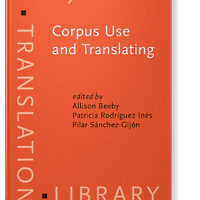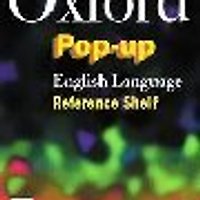Semantic Prosody
Since the phenomenon was first described by John Sinclair in 1987 and given its name by Sinclair and Louw, semantic prosody has been much debated by corpus linguists, with various interpretations being put forward. The first example to be described was “set in”. John Sinclair remarked that “The most striking feature of this phrasal verb is the nature of its subjects. In general, they refer to unpleasant states of affairs.” This book by Dominic Stewart sets out to provide a critical evaluation of this phenomenon (only in a hardback edition1, so it is probably intended mainly for the library market or as a university textbook).
Louw suggested in 1993 that semantic prosody can be reversed- either intentionally, to create irony, or unintentionally, thus revealing insincerity. It may also perhaps reveal non-native language competence, as when a student’s supervisor was thanked for “his persistent help and advice”, (as quoted by Hunston in 2007). Semantic prosody may therefore be a useful area of study for the language teacher, and concordance analysis can serve as a valid proxy for native-speaker experience.
The first chapter provides a comprehensive overview of the situation to date. As Stewart points out, some linguists have seen semantic prosody as an essential device in evaluative text, while others have sought to write it off as merely connotation. Louw and Sinclair, and their followers, perceive it to be a much more subtle and pervasive linguistic phenomenon, which may finally provide tangible evidence of what makes language tick. Stewart warns us from the start that his approach may be rather unsettling: “I should alert the reader straightaway that during the course of the book I repeatedly discuss and frequently challenge studies conducted on semantic prosody so far, above all in Chapters 5 and 6.” (p 3)
In this critical evaluation, the author raises many questions regarding semantic prosody, some of which are still difficult to answer at the current stage of research in the field. Stewart pleads in chapter three, for more diachronic studies of semantic prosody. “A diachronic approach, on the other hand, could try to establish how the meaning of the unit changes over the years or centuries, or it could investigate how words bestow meanings upon each other over time within that unit. » (p 55)
In chapter five, Stewart also more broadly questions the way corpus linguists go about analysing corpora. Howeve, many of these questions could find answers in the detailed explanations provided by John Sinclair in ‘Reading Concordances’ (2003), which is included in Stewart’s wide-ranging bibliography.
Stewart’s book is not only full of queries; there is also rather a lot of hedging. He also yields a little too readily to the temptation of using expressions that have been the object of study in the field of semantic prosody. Stewart seems to have been ‘primed’ to use literary allusions, as in these two consecutive sentences on p 104: “Or any other situation where you would find text presented with such fearful symmetry.” followed by the next paragraph’s opening statement: “The concordance is in a sense the jewel in the corpus linguistics crown.” The reader feels implicitly invited to join in a game of ‘spot the semantic prosody’ and ‘identify the literary reference’, which may or may not please.
Despite these possibly cloying attempts at humour, Stewart is nevertheless capable of very astute linguistic analyses, such as, for example, that of the prosody of “more flexible” (pp 66-68). However, the author then seems to lose his nerve and immediately disavows his own analysis (p 69) by stating that: “At this point the whole thing becomes ludicrous, because the rather complicated prosody which might attend upon this description is suggested by the meaning of the core item anyway.” If taken literally, this creates a Catch-22 situation where an analysis would be seen as invalid if it describes the expected facts accurately, but where any analysis that describes unexpected facts could only be seen as unjustifiable. Louw’s first paper on semantic prosody described the phenomenon as revealing unsuspected facts about language. If the same phenomenon is behind acknowledged language facts, this should be cause for rejoicing, even if the prosody of “cause” still requires further study, as Stewart remarks (pp 44-45).
Reading this book will no doubt make people want to start looking at corpora for further examples of semantic prosody. Stewart regrets (p 105) that in many cases the corpus data used in studies are inaccessible to the reader. Fortunately for language teachers and students of linguistics, several large corpora are now freely accessible via Mark Davies’ website (http://corpus.byu.edu) and Adam Kilgarriff’s Sketch Engine provides access to many more (http://ca.sketchengine.co.uk/register).
As this is the first full book devoted to the topic of semantic prosody, it is difficult to find points of comparison. It is perhaps too critical an analysis to serve well as an introductory textbook to the topic. I would recommend as a counterpoint the second text on the subject by Louw, ‘Contextual Prosody Theory: bringing Semantic Prosodies to Life’, first published in 2000 but now republished online as a pdf file at: http://www.revue-texto.net/index.php?id=124
In his concluding chapter, Stewart draws an extensive map of further research possibilities, and his work will surely encourage many students to continue the exploration of the still uncharted waters of semantic prosody.
'Books > Books on Corpus' 카테고리의 다른 글
| Variation in English: Multi-Dimensional Studies (0) | 2012.07.05 |
|---|---|
| Corpus Use and Translating (0) | 2012.07.04 |
| Corpus Linguistics with BNCweb (0) | 2012.03.13 |
| Oxford Pop-Up English Language Reference Shelf (0) | 2012.02.16 |
| book chapters on parallel corpus and movies (0) | 2012.02.08 |




